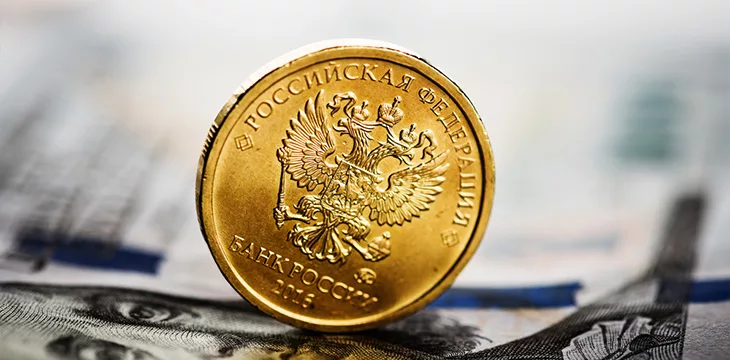|
Getting your Trinity Audio player ready...
|
Russia’s plan to introduce a central bank digital currency (CBDC) has hit another milestone after officials confirmed the completion of 25,000 digital ruble transactions.
Data shows digital ruble transactions have soared to 25,000 in under seven months, with person-to-person transactions contributing a significant portion of the milestone with a staggering 19,000 separate transactions.
Transactions involving customers and business entities made up a slice of the metrics at 6,000 at the start of March. A closer look at the figures indicates a growing dependence on smart contracts for programmability functionalities.
The Bank of Russia began its retail CBDC pilot in mid-August after the State Duma launched a comprehensive legal framework, onboarding 12 commercial banks for the experiments.
Spread across 11 cities with 600 individual users and 30 merchants, Russia’s digital ruble started slowly with early transactions reportedly plagued by errors and delayed transactions from commercial banks playing an intermediary role.
Aware of the challenges, Bank of Russia Deputy Governor Olga Skorobogatova noted that the commercial banks dug their heels in to resolve the initial challenges. In a meeting of the Association of Russian Bank, Skorobogatova disclosed that digital ruble transactions are settled in seconds, with the central bank bracing for an expansion.
“In the beginning, of course, we saw errors on the bank’s side,” said Skorobogatova. “But the banks very quickly eliminated all errors, and today, we have not made such errors.”
Russia is keen to ramp up its digital ruble transaction figures after the success of the first phase of testing. A total of 17 commercial banks, including Russia’s largest financial institution, Sberbank, have been tipped to join the first clutch of participants amid rumors of an expansion to more cities.
There are also plans to broaden the digital ruble use cases in the transport and hospitality sectors, with the Bank of Russia exploring cross-border functionalities.
“When creating the digital ruble platform, we included the possibility of its integration with similar foreign platforms,” said Bank of Russia Governor Elvira Nabiullina.
Moving at a snail’s pace
Russia’s milestone of 25,000 CBDC transactions pales in comparison with metrics from other jurisdictions exploring the concept of digital versions of their national currency.
China’s digital yuan transactions soared past 50,000 in the first six months after launch, while India’s digital rupee surpassed the 30,000 mark in a similar time frame with Russia. However, experts proposed that expanding the number of participants may significantly contribute to Russia’s CBDC adoption metrics.
Given plans to introduce a common settlement platform for BRICS member states, Russia could fast-track its CBDC studies to support its de-dollarization ambitions.
To learn more about central bank digital currencies and some of the design decisions that need to be considered when creating and launching it, read nChain’s CBDC playbook.
Watch: Finding ways to use CBDC outside of digital currencies

 09-19-2025
09-19-2025 





